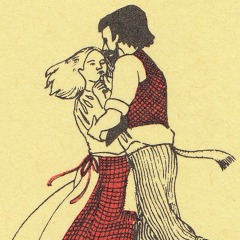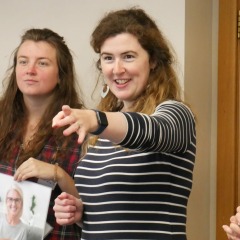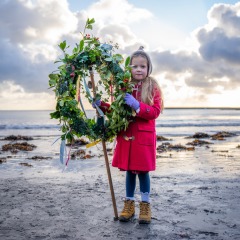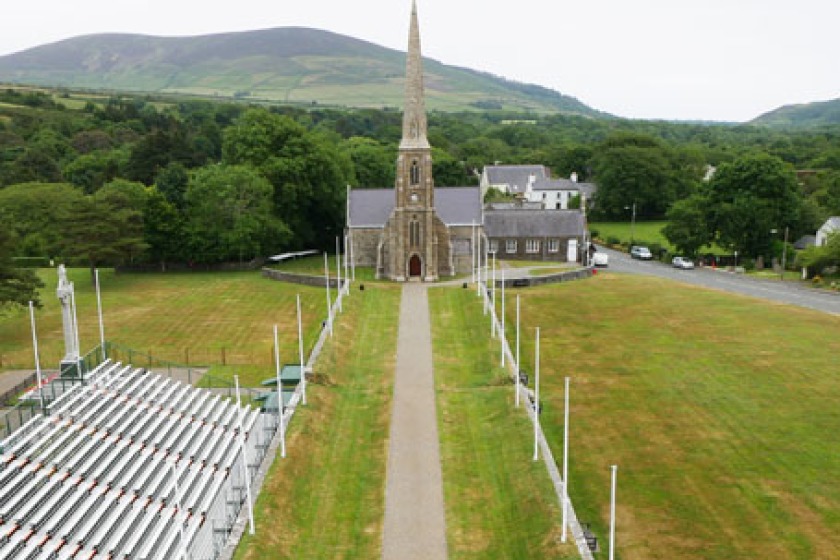Tynwald Day in Manx folklore
Thu, 20 Jun 2019
In the sixth in our series of articles about Manx folklore and calendar customs, this piece looks at the folklore side of Tynwald Day, finding out why the Manx National Day is linked to Themselves, fertility and a Celtic god. This was recently published in the Manx Independent:
Tynwald Day in Manx folklore
There’s more to Tynwald Day than big hats, politicians on the hill and a good day out – it’s also about fairies, fertility and appeasing the Celtic gods.
It isn’t by chance that the Isle of Man’s most important day falls on 5 July – this is Midsummer’s Day, by the old calendar. With the slippage of 11 days when the calendars shifted in 1752 (about which people rioted elsewhere in the British Isles) the Island’s Midsummer event found itself in July instead of 24 June.
Further obscured by becoming known as ‘St. John’s Feast Day,’ 5 July would have been an important day in pre-Christian times, which shows in some of the traditions.
Bollan Bane, the beautiful green plant worn on people’s breasts at the Fair, is just one example of where folklore creeps into the day.
This plant is thought to have the power to ward off evil, or the influence of the Lil’ Fellas, which is a particularly troublesome at this time of year.
One of the Isle of Man’s most lively tunes was collected on the hills of Kirk Michael thanks to bollan bane.
Bill Pherick was returning home late one night when he came across the Themselves playing a fabulous tune. He learnt it by ear, but each time he left the Lil’ Fellas behind he lost the tune. So, Bill put on some bollan bane and so overcame the jeel on him, to make away with the tune which is still played today.
Be careful when out collecting your own bollan bane before the fair though – if you step on Lus y Chiolg (St. John’s Wort) on the evening of 4 July, a fairy horse will rise out of the ground and keep you captive, riding you around until sunrise!
Another very visible piece of folklore at Tynwald Day are the rushes on the path between the hill and church.
These represent the rushes which were once taken up South Barrule on the eve of Midsummer by a member of each Manx household. This was the year’s rent owed to Manannan, for living on his Island.
A bundle of rushes is not a bad annual rent – no wonder it is a tradition beginning to revitalise amongst people today.
Perhaps less likely to revive are the visits to a holy well in Marown where the practice was to walk clockwise around the well whilst holding some of its water in your mouth, with which you would wet a piece of cloth torn from your dress, to leave there tied to a tree. The belief was that this would bring fertility.
But, however you mark the day, we hope you have a wonderful Tynwald Day!
The article will soon be available to be enjoyed on the Isle of Man Newspapers' website.
More about the folklore and customs of the Isle of Man can be found amongst our Manx Year pages: Tynwald Day.
Recent News
-

Rinkaghyn Vannin: Manx dance book and cassette released online
Thu, 18 Apr 2024
-

Travel Insighter article on the Isle of Man
Wed, 17 Apr 2024
-

Vin Diesel to star in film version of the Buggane of St Trinian's
Mon, 01 Apr 2024
-

Manx Gaelic Summer School
Tue, 12 Mar 2024
-

March Manx music and dance newsletter
Fri, 01 Mar 2024
-

Adrian Corkill awarded the RBV for his work on Manx shipwrecks
Fri, 23 Feb 2024
-

February Manx music and dance newsletter
Thu, 01 Feb 2024
-

Folklore Guide event
Tue, 09 Jan 2024
-

Beautiful pictures of an ancient Manx tradition
Wed, 20 Dec 2023
-

Youth Manx trad session announced
Tue, 19 Dec 2023

